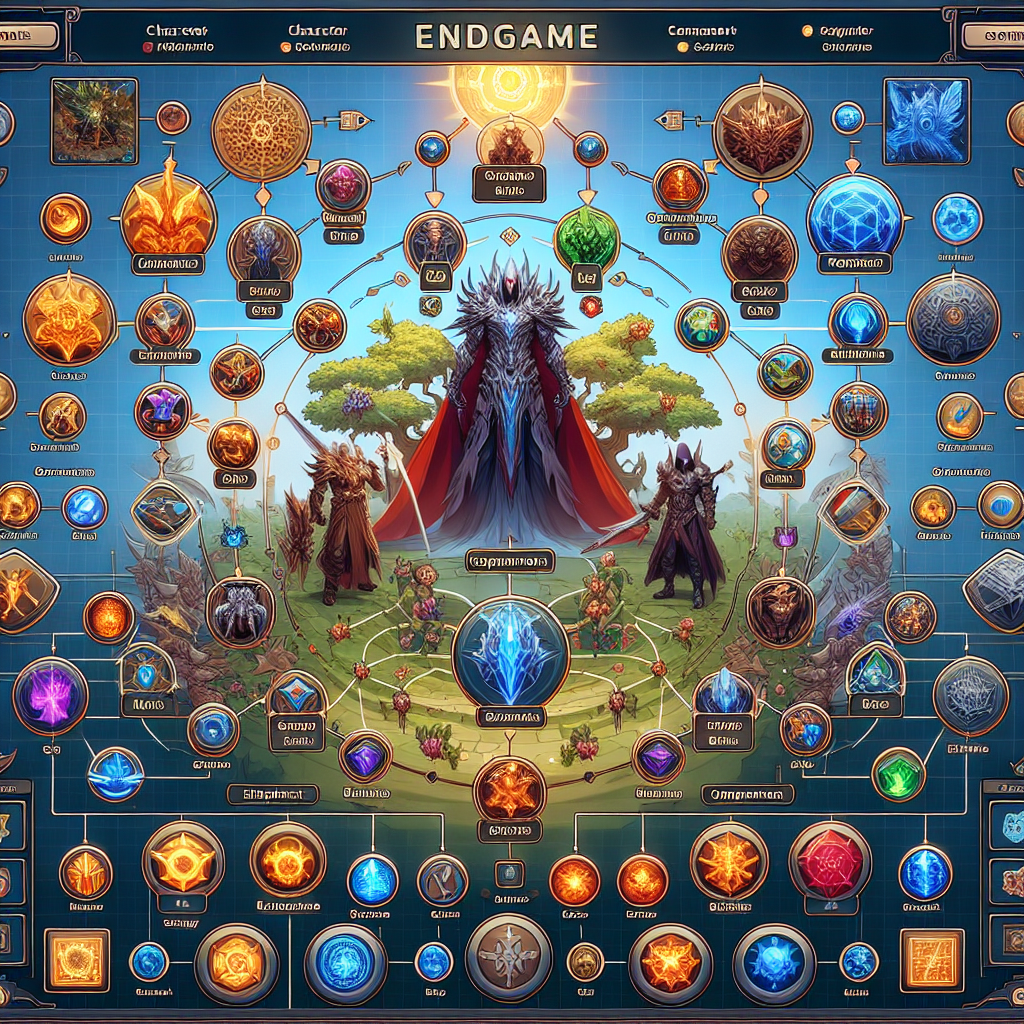How MMOs Handle Endgame Content: Keeping Veterans Engaged
Massively Multiplayer Online (MMO) games have captivated players for decades, offering immersive virtual worlds, engaging communities, and a sense of progression that keeps users hooked. However, one of the biggest challenges for MMO developers is maintaining long-term player retention, especially when it comes to endgame content.
The Importance of Endgame Content in MMOs
Endgame content refers to the activities, challenges, and progression systems that become available to players once they've reached the maximum level or completed the core storyline of an MMO. This content is crucial for keeping veteran players engaged and invested in the game long after the initial "honeymoon" phase has worn off.
Endgame content serves several key purposes:
- Ongoing Progression: It provides a sense of continued growth and development for players, allowing them to acquire more powerful gear, abilities, and achievements.
- Challenging Encounters: Endgame content typically features the most difficult and complex challenges in the game, such as high-level raids, dungeons, and player-versus-player (PvP) battles.
- Social Interaction: Endgame activities often require coordinated teamwork and communication, fostering a sense of community among veteran players.
- Replayability: Well-designed endgame content encourages players to return to the game repeatedly, ensuring long-term engagement and retention.
Challenges in Maintaining Endgame Content
While endgame content is essential for keeping veteran players invested, it also presents several unique challenges for MMO developers:
Content Consumption Rates
Experienced players tend to consume endgame content at a much faster rate than new players. This can lead to a content drought, where veteran players quickly exhaust the available endgame activities and become bored or disengaged.
Balancing Difficulty
Endgame content needs to be challenging enough to provide a sense of accomplishment and progression for veteran players, but not so difficult that it becomes inaccessible or frustrating for newer players. Striking this balance can be a delicate task.
Ongoing Development Costs
Continuously creating new and engaging endgame content requires a significant investment of time and resources, which can be a significant burden for game studios, especially those with smaller development teams or limited budgets.
Player Burnout
The intense focus on endgame content can sometimes lead to player burnout, where veterans become fatigued by the repetitive nature of the content or the pressure to constantly "keep up" with the latest developments.
Strategies for Keeping Veterans Engaged
To address these challenges and maintain long-term player engagement, MMO developers have developed a variety of strategies:
Introduce Ongoing Content Updates
Regularly releasing new endgame content, such as additional raids, dungeons, or PvP modes, can help keep veteran players invested and prevent content droughts. These updates should provide a sense of novelty and challenge, while also expanding the overall progression system.
Implement Vertical Progression
Vertical progression systems, where players can continuously improve their gear, abilities, and power level, can give veteran players a sense of continuous growth and development. This can be achieved through mechanisms like gear treadmills, skill trees, or talent systems.
Diversify Endgame Activities
Offering a diverse range of endgame activities, such as PvP, player-versus-environment (PvE) challenges, crafting, exploration, or social events, can cater to a wider range of player interests and playstyles. This helps to prevent the endgame from feeling stale or repetitive.
Encourage Community Engagement
Fostering a strong and engaged community of veteran players can be a powerful tool for retention. This can be achieved through features like player-driven events, guilds, leaderboards, and social systems that facilitate collaboration and competition.
Implement Alternate Progression Paths
Providing alternative progression paths, such as cosmetic rewards, achievements, or alternate character builds, can give veteran players additional goals to pursue and a sense of continuous progression beyond the core endgame content.
Leverage Randomization and Procedural Generation
Incorporating randomization and procedural generation into endgame content can help to create a sense of unpredictability and replayability. This can include randomly generated dungeon layouts, dynamic enemy compositions, or variable event triggers.
Introduce Seasonal or Rotating Content
Rotating or seasonal endgame content, such as time-limited events, challenges, or rewards, can create a sense of urgency and excitement among veteran players, encouraging them to return to the game regularly.
Implement Meaningful Choices and Consequences
Allowing veteran players to make meaningful choices that have tangible impacts on the game world or their character progression can foster a greater sense of investment and ownership. This can include branching storylines, faction-based conflicts, or player-driven narratives.
Ethical Considerations in Endgame Content Design
While keeping veteran players engaged is crucial for the long-term success of an MMO, it's essential to do so in an ethical and responsible manner. Some key considerations include:
- Avoiding Predatory Monetization: Endgame content should not be designed in a way that exploits or manipulates players, such as through pay-to-win mechanics or loot box systems.
- Promoting Healthy Playtime: Endgame content should not incentivize or reward excessive playtime to the detriment of players' well-being.
- Fostering Inclusive Communities: Endgame activities and social systems should be designed to be inclusive and welcoming to all players, regardless of their skill level, background, or identity.
- Maintaining Transparency: MMO developers should be transparent about the mechanics, progression systems, and monetization of endgame content to build trust with their player base.
Key Takeaways
Endgame content is a critical component of maintaining long-term player engagement and retention in MMO games. Effective endgame design requires a multifaceted approach that addresses the unique challenges of content consumption, difficulty balancing, ongoing development costs, and player burnout.
By implementing strategies like ongoing content updates, vertical progression, diverse endgame activities, community engagement, alternative progression paths, randomization, and meaningful choices, MMO developers can keep veteran players invested and eager to return to the game.
At the same time, it's essential to design endgame content in an ethical and responsible manner, avoiding predatory monetization, promoting healthy playtime, fostering inclusive communities, and maintaining transparency. By striking this balance, MMO developers can create endgame experiences that captivate and retain their most dedicated players.





